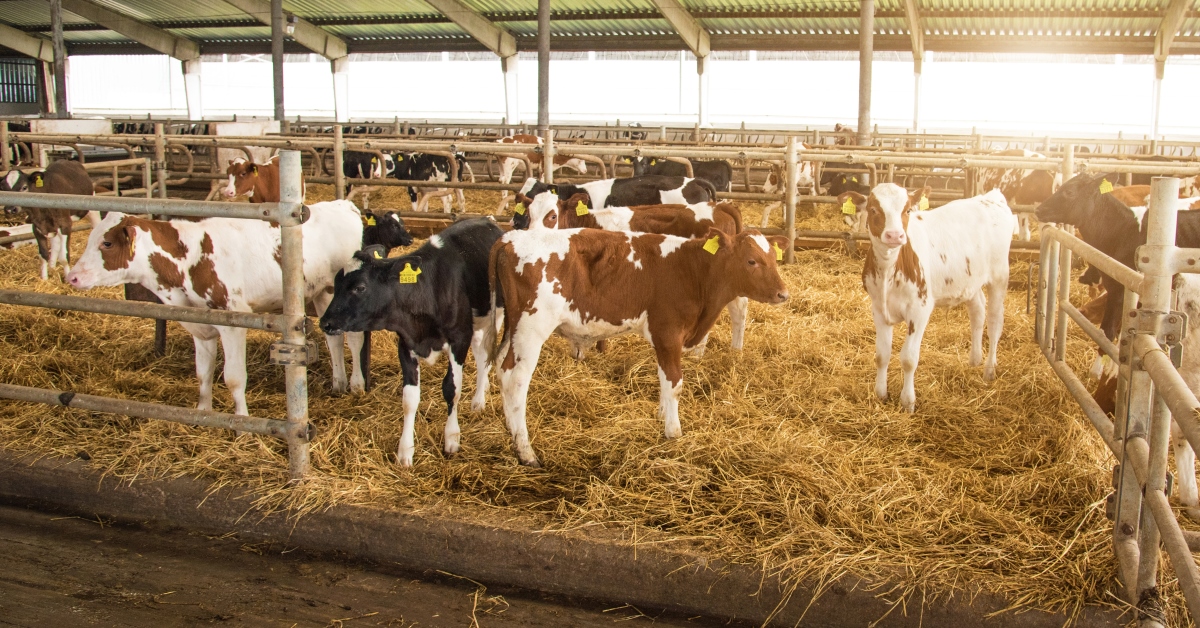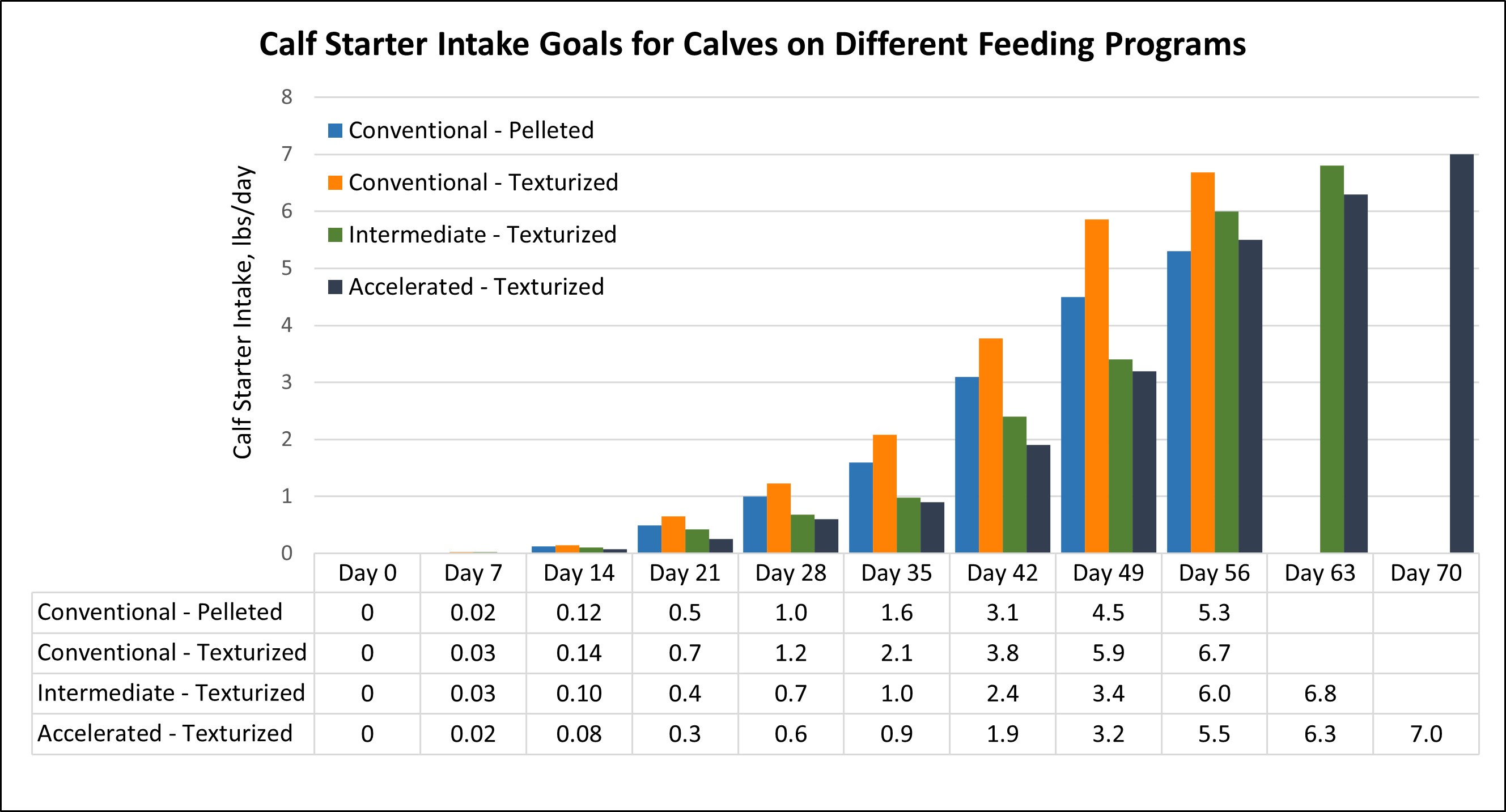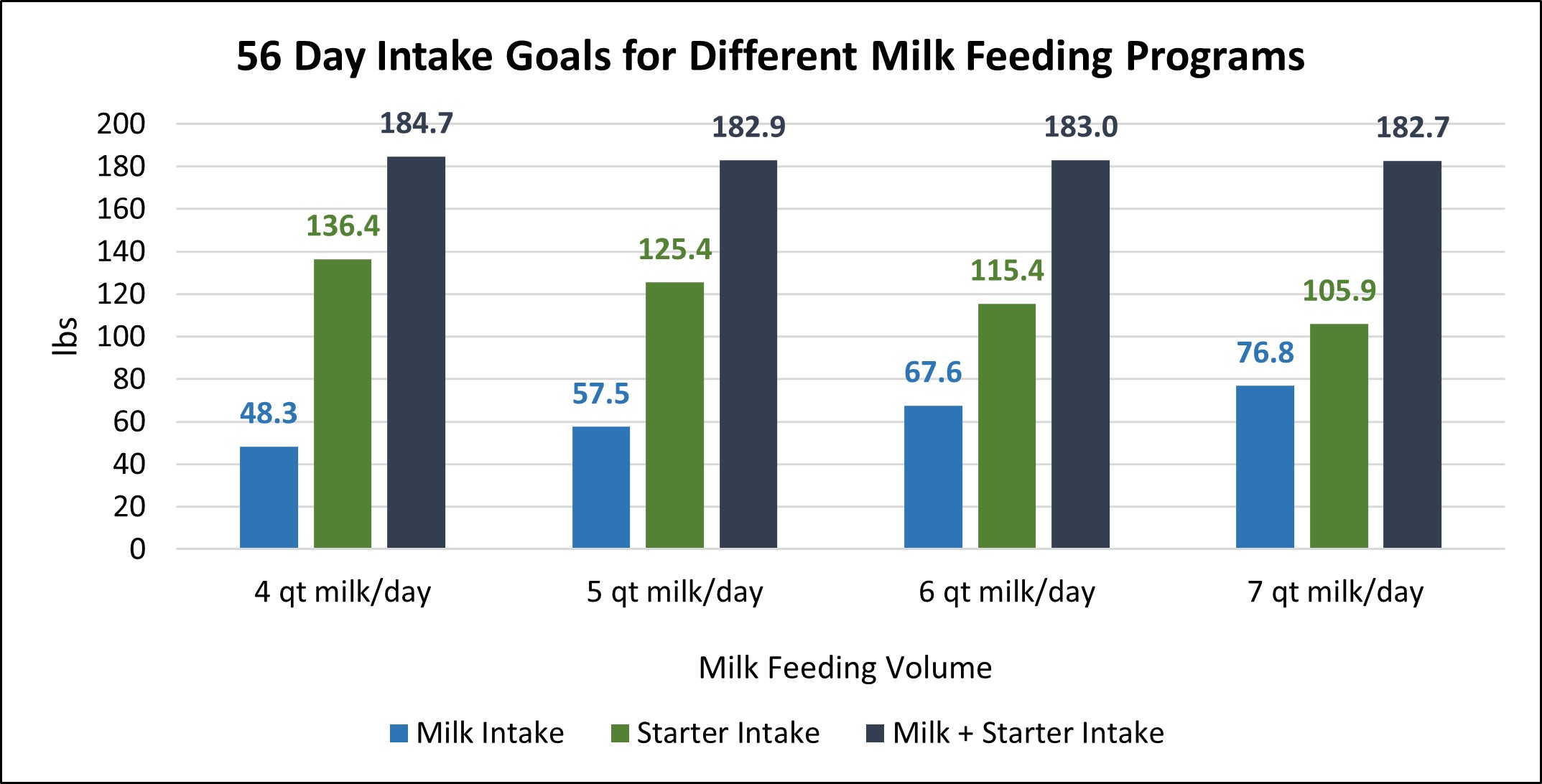
What is an area you would like to improve in your calf raising? The chances are that the post-weaning transition phase comes to mind. The calf goes through many changes in the transition phase. This is typically their first introduction to group housing, a new barn and a new diet, all of which are stressful and can lead to performance slumps and health issues early in the grower phase. Below are recommendations to keep in mind to set your calves up for success in the transition period.
Program Length
|
Program |
Recommended Program Length |
Recommended Minimum Days to Weaning |
Recommended Milk Replacer Feeding |
Milk Replacer Protein-Fat |
Targeted Total Milk Replacer Intake |
|
Conventional |
56 |
42 |
1.25 lb/day |
20-20 |
< 50 lbs |
|
Intermediate |
63 |
49 |
1.50 to 1.75 lb/day |
24-20, 24-24 |
60 to 70 lbs |
|
Accelerated |
70 |
56 |
> 2.0 lb/day |
24-20, 24-24 |
> 100 lb |
Calf starter intake should determine weaning and will transition success
- Before weaning: Calves need at least 21 days of over 0.5 pounds/day calf starter intake before weaning begins.
- Do not rush weaning: Calves should be consuming 3 pounds/day of calf starter for three consecutive days before weaning is complete
- Averages are just that… averages: Even if average calf starter intakes are good, they are still averages. Weaning calves based solely on intake averages will short calves on the lower end. Be sure to identify low-intake calves early and give them more time to ramp up on calf starter intake before weaning. Remember: all calves need to succeed to achieve a truly successful transition period.

Dry matter intake is a trade-off
It is important to know that there is a trade-off between milk replacer intake and calf starter intake. When calves are offered lower volumes of milk replacer, they will consume more calf starter in the pre-weaning phase. However, calves given higher volumes of milk replacer will have lower calf starter intakes. Regardless of the milk feeding program, the combined dry matter intake (DMI; milk replacer intake + calf starter intake) typically evens out, as shown below. Since calves on an intermediate or accelerated feeding program have lower calf starter intakes, it is even more crucial to provide ample time post-weaning for calves to ramp up on calf starter intake before they move to the next phase of life.

Transition phase
Avoiding post-weaning performance and health slumps is heavily influenced by making the right management decisions.
- Keep calves on starter after they move to their grower pen: Intakes can drop by 25% or more when calves move to the grower phase. Newly weaned calves should be fed the same starter they received in the nursery phase for at least the first two to three weeks in the transition facility before they start on the grower feed.
- Avoid feeding a TMR to newly weaned calves: A TMR containing wet feed sources is not a good option for transitioning calves. Wet feeds are 60% moisture by weight, and newly weaned calves do not yet have the rumen capacity to consume enough TMR to meet their daily energy requirements. A grower feed containing whole corn and pellet is recommended.
- Feeding hay to transition calves: If offering forage, be sure to keep track of grain intake. Remember, grain is required, and forage is optional for heifers two to six months of age. Forage that is high-quality, fine-stemmed and mold-free is preferred. Once hay is offered, hay intake begins to increase over time.
- Free-choice, clean and fresh water should always be available to dairy animals: Dairy heifers have an increased need for water during times of stress, such as hot weather, extreme cold, low humidity, scours and high fever.
- Log in to post comments
